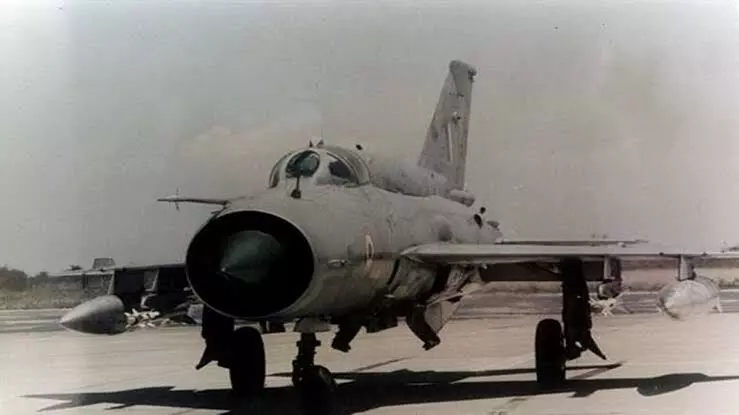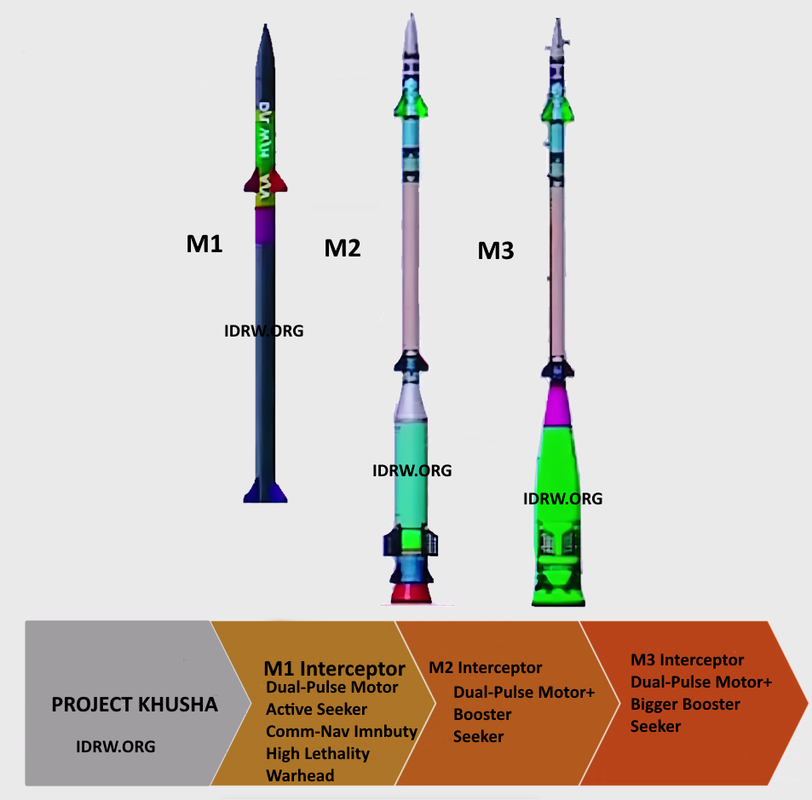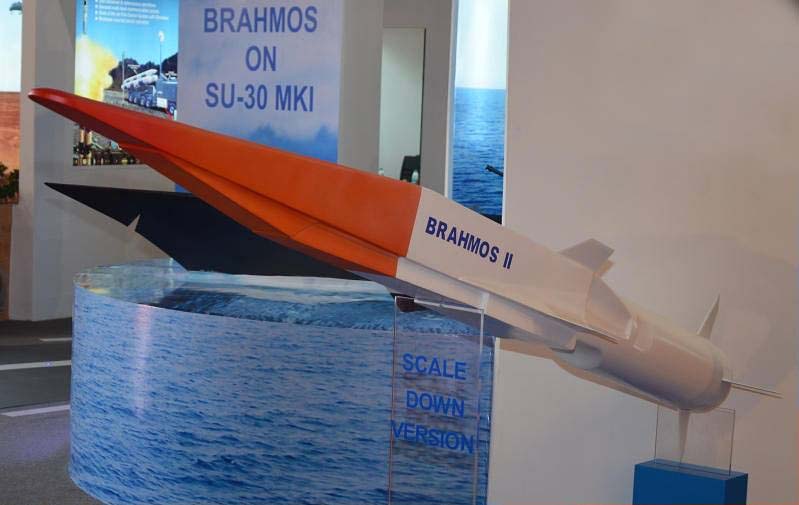SOURCE: AFI

Hindustan Aeronautics Limited (HAL) has confirmed its readiness to manufacture 24 Tejas Mk1A fighter jets per year starting in 2027, contingent on the Indian Air Force (IAF) and the Ministry of Defence (MoD) clearing additional orders for 97 units of the advanced light combat aircraft, in addition to the 83 units ordered in 2021. This ambitious production ramp-up underscores HAL’s commitment to bolstering India’s indigenous defense capabilities under the Atmanirbhar Bharat initiative.
To achieve this enhanced production capacity, HAL has activated a third production line at its Nashik plant, which will contribute an additional 8 units per year to the existing capacity of 16 units from its two Bangalore facilities. This strategic expansion strengthens HAL’s ability to meet the IAF’s growing demand for the Tejas Mk1A, an advanced variant of the Light Combat Aircraft (LCA) featuring improved avionics, radar systems, and weapon capabilities.
Continue readingSOURCE: AFI

A recent report by a prominent European think tank has underscored the Indian Air Force’s (IAF) overwhelming strategic advantage over the Pakistan Air Force (PAF) in the context of precision strikes and airbase targeting. The analysis, focusing on the IAF’s performance in a recent conflict with Pakistan, highlights the IAF’s ability to cripple key PAF airbases in the first wave of a potential war, potentially neutralizing Pakistan’s air operations for an extended period. The report emphasizes the IAF’s precision cruise missile capabilities, particularly with systems like the BrahMos and SCALP, and points to Pakistan’s geographical limitations as a critical vulnerability.
According to the think tank, the IAF’s ability to target and disable PAF runways, hangars, and critical infrastructure has demonstrated a decisive edge in modern warfare. During the recent conflict, the IAF executed coordinated precision strikes on 11 of Pakistan’s 13 major airbases, using a combination of BrahMos supersonic cruise missiles, SCALP air-launched cruise missiles, and other precision-guided munitions like HAMMER and Crystal Maze. These strikes, part of Operation Sindoor launched on May 7, 2025, targeted key PAF bases, including Nur Khan (Chaklala, Rawalpindi), Rafiqui (Shorkot), Murid (Chakwal), Rahim Yar Khan, Sukkur, Chunian (Kasur), Bholari, Jacobabad, Sargodha, Skardu, and radar sites at Pasrur and Sialkot. The operation inflicted significant damage, with reports confirming the destruction of runways, command centers, radar installations, and high-value assets, including an airborne early warning and control (AEW&C) aircraft and long-endurance UAVs.
Continue readingSOURCE: AFI

In a significant move toward modernizing its battlefield capabilities, the Indian Army has initiated the procurement process for battlefield reconnaissance drones, signaling a continued shift toward leveraging advanced technologies for enhanced situational awareness and precision warfare.
The procurement aims to equip frontline units with tactical unmanned aerial systems (UAS) capable of providing real-time surveillance, target acquisition, and reconnaissance data in complex operational environments. This step is aligned with the Army’s broader transformation agenda focused on network-centric warfare and battlefield transparency.
Continue readingSOURCE: AFI

The iconic 84mm Carl Gustaf rocket launcher, a battlefield staple for decades, has received a game-changing upgrade with the introduction of the FURY Thermal Imaging-Based Fire Control Sight. This cutting-edge targeting system elevates the Carl Gustaf to new heights of lethality, enabling day and night operations, automatic target tracking, and a significantly higher first-hit probability. With the FURY Sight, precision meets power, redefining the capabilities of this versatile weapon system for modern warfare.
The FURY Sight integrates advanced high-definition (HD) thermal imaging with auto-target tracking, providing soldiers with unmatched situational awareness and precision in any operational environment. Whether engaging targets in broad daylight, pitch-black darkness, or adverse weather conditions, the FURY Sight ensures operators can detect, track, and neutralize threats with confidence. Its intuitive design and rugged construction make it a reliable companion for troops facing the complexities of today’s battlefields.
Continue readingSOURCE: AFI

In a biting display of mockery, an image gifted by Pakistan’s Prime Minister Shehbaz Sharif to Army Chief General Asim Munir has become the subject of widespread ridicule, exposing an embarrassing blunder. The framed artwork, presented during a formal ceremony on May 24, 2025, purportedly depicting Pakistan’s military prowess, was revealed to be a photoshopped image originally sourced from a 2019 Chinese military drill, highlighting a clumsy attempt to project strength amid recent battlefield setbacks.
The image in question, prominently featuring a fiery scene of artillery rockets lighting up the night sky, was identified as a photograph of a PHL-03 long-range multiple launch rocket system (MLRS) firing during a People’s Liberation Army (PLA) 74th Group Army exercise. The original photo, published by China Military Online on August 20, 2019, was credited to editor Li Jiayao and captioned “Artillery battery fires rockets at night – Ministry of National Defense.” A corresponding post on X from the same day further confirmed the image’s origin, noting the PLA’s 74th Group Army’s involvement. However, the version gifted to General Munir had been altered, with Pakistani military insignia and branding superimposed to falsely suggest it depicted a Pakistani operation.
Continue readingSOURCE: PTI
Indian astronaut Shubhanshu Shukla and three other crewmates, part of the Axiom-4 mission to the International Space Station, are headed into quarantine, the US-based private space firm announced on Sunday. The Axiom-4 mission is scheduled for lift-off from the Kennedy Space Centre in Florida on June 8.
Continue readingSOURCE: PTI
Prime Minister Narendra Modi on Monday said Pakistan’s only aim is to hate India and think of ways to harm it, while our nation has set goals of removing poverty and bringing about economic development. Addressing a rally in Dahod in Gujarat, the PM hailed Operation Sindoor and said “those daring to wipe off the sindoor of our sisters must know their end is near”.
Twenty-six men were gunned down by terrorists in Pahalgam in Kashmir on April 22, following which India launched Operation Sindoor in the early hours of May 7, resulting in massive damage to terror infrastructure in Pakistan and Pakistan-occupied-Kashmir.
Continue readingSOURCE: IANS

Prime Minister Narendra Modi, during his first visit to Vadodara after Operation Sindoor, met with the family of Colonel Sofiya Qureshi — one of the two women officers from the armed forces who led media briefings on the operation.
Immediately after landing at Harni Airport, the Prime Minister interacted with Colonel Qureshi’s family, who described the meeting as a proud and emotional moment. Her father, Taj Mohammad, shared his joy with IANS, saying, “I was ecstatic to meet the Prime Minister. Every citizen should be aware of our nation — Ek Bharat, Shreshtha Bharat. The youth, whether boys or girls, must serve the country. Only then can India truly progress.”
Continue readingSOURCE: IANS

Prime Minister Narendra Modi has made a firm decision, one unprecedented in the past seventy years – that India maintains a firm and uncompromising stance against terrorism, enforcing strict measures to eliminate any threats, said Vice President Jagdeep Dhankhar in Narsinghpur on Monday.
While addressing a gathering of farmers and industrialists in Narsinghpur (170 km from Bhopal), the Vice President said that Operation Sindoor has served as a decisive response to Pahalgam, demonstrating India’s formidable strength to the world.
Continue readingSOURCE: IANS

May 26, 1999 marks a memorable day for the country as well as the Indian Air Force (IAF). It was on this day, twenty-six years ago that the IAF launched a major military operation titled ‘Safed Sagar’ to break the back of Pakistani intruders and its Army regulars who surreptitiously entered the Indian side of Line of Control (LoC) and occupied crucial positions in Kargil sector.
The IAF’s ‘Operation Safed Sagar’ set a new paradigm for the forces in defending the country’s borders as it not only destroyed the illegally-occupied positions but also helped the ground forces in mounting its operations and going for the kill.
Continue readingSOURCE: PTI
Containers from a Liberian cargo ship that sank, off the Kerala coast, have started washing ashore, police said on Monday.
Coastal police said that some containers have been found along the southern Kollam coast. The total number of containers washed ashore is not yet known, and authorities are working to manage the situation, they said.
Continue readingSOURCE: PTI
)
The National Investigation Agency (NIA) has arrested a CRPF personnel for allegedly sharing sensitive information with Pakistan intelligence officers, officials said on Monday.
The accused, Moti Ram Jat, was actively involved in espionage activity and had been sharing classified information related to national security with the Pakistan intelligence officers (PIOs) since 2023, they said. The agency has found that he was receiving funds from the PIOs through various conduits, officials said.
Continue readingSOURCE: PTI
A member of the banned CPI (Maoist), who was carrying a bounty of Rs 5 lakh on his head, was killed in a gunfight with security forces in Jharkhand’s Latehar district on Monday, a senior police official said.
Another red rebel was also arrested during the operation, he said. The encounter between security forces and Maoists broke out in a forest in Dauna under the Mauhadand Police Station limits on Sunday night, he said.
Continue readingSOURCE: RAUNAK KUNDE / NEWS BEAT / IDRW.ORG

India’s quest for self-reliance in defense technology has taken a significant leap forward with Project Kusha, an indigenous long-range air defense system being developed by the Defence Research and Development Organisation (DRDO). Designed to match the capabilities of Russia’s S-400 Triumf, Project Kusha is poised to become a cornerstone of India’s multi-layered air defense architecture. Featuring three types of interceptor missiles with ranges of 150 km, 250 km, and 350 km, the system aims to neutralize a wide array of aerial threats, from stealth fighters to ballistic missiles.
However, Project Kusha is not just a standalone system—it marks the first phase of a broader, multi-phase program to develop very long-range surface-to-air interceptor missiles, drawing inspiration from India’s Ballistic Missile Defence (BMD) program. With plans for Phase-II and maybe even a Phase-III, including anti-hypersonic capabilities, India is positioning itself to rival or even surpass advanced systems like Russia’s S-500, signaling a transformative shift in its strategic defense posture.
Continue readingSOURCE: RAUNAK KUNDE / NEWS BEAT / IDRW.ORG

India and Russia are poised to resume high-level discussions for the co-development of the BrahMos-II, a next-generation hypersonic cruise missile aimed at achieving speeds of Mach 6 or higher, potentially drawing inspiration from Russia’s 3M22 Zircon (also spelled Tsirkon), a scramjet-powered, nuclear-capable hypersonic missile. This ambitious project, initially proposed by BrahMos Aerospace nearly a decade ago, faced hurdles due to Russia’s reluctance to share advanced hypersonic technology and concerns from the Indian Armed Forces over the missile’s high per-unit cost. However, a renewed global focus on hypersonic weaponry has reignited interest in the program, prompting both nations to explore collaboration to bolster their strategic capabilities.
The BrahMos missile, a product of the Indo-Russian joint venture BrahMos Aerospace, established in 1998, is the world’s fastest supersonic cruise missile, capable of reaching speeds up to Mach 3.5 and ranges of 290–800 km, depending on the variant. Deployed across the Indian Army, Navy, and Air Force, it has proven its versatility with land, sea, air, and submarine-launched configurations. The missile’s precision, stealthy radar signature, and “fire-and-forget” capability have made it a cornerstone of India’s defense strategy, with over 130 successful tests and operational use in exercises like Operation Sindoor in May 2025.
Continue reading